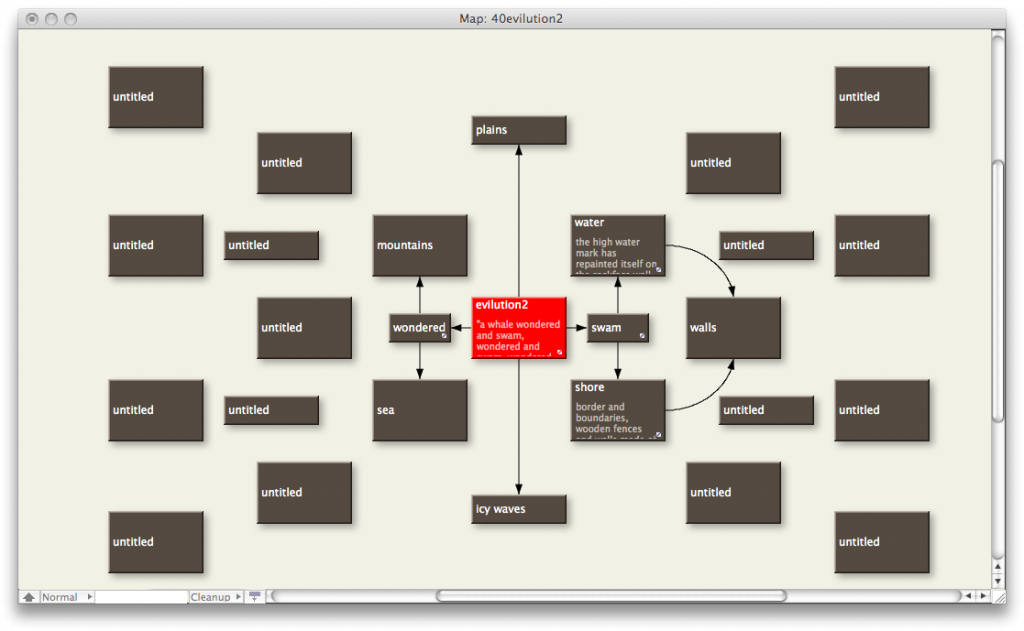HYPERTEXT & WRITING: Readerly/Writerly
One of the hardest things for me to accept in my writing was to not only give up my work to the reader, but let him decipher it for himself, thus risking complete misunderstanding of “my” story. Beaten into submission by several Creative Writing and Literature courses taught by one harder-headed than I, and faced with the scowling sardonic Roland Barthes as my new theological icon, I reluctantly let the concept of writerly filter into my soul and take it into my heart.
As part of the literary group Fictionaut, I just put up one of my hypertext pieces “Maude Nichols” to share with the membership and boy, I can’t tell you how excited I was to read this comment from writer Finnegan Flawnt:
“Finally, “Maude Nichols” is a wonderful title/name. Harold and Maude, Harvey Nichols…etc. very well done. the habitual “love it” that overcomes me often when i read your stuff seems strangely inappropriate. you somehow let go of this fiction as an author…most fascinating!”
Ohmigod–did you read that? “you somehow let go of this fiction as an author..most fascinating!” (Are you reading this, Steve? Are you believin’ it?)
Hypertext to me has been a major step in the right direction of “letting go” of my work and giving it to the reader to then “rewrite” via his own opinions and experience. For one thing, it appears to give full control to the reader but in truth, the writer must lay out all paths, all the different ways of getting from a)the beginning to c) the end no matter what steps are used to get there. While the writer has limited control (guidance at best) on which particular steps (writing spaces/links) the reader may choose, he will have planned each out carefully so he is in fact writing the same story many different ways; just as a reader will read it differently than another reader, or even than himself in a future reading.
Believe me, you don’t know how difficult it was for this control freak to give up the wheel and allow some reader to risk his own interpretation of my stories. It’s taken years, but I think I’m there now, in a happy place where I can smile as someone takes my words and runs helter skelter with them spilling out all over the hillside. This revelation is extremely exciting to me as a writer. It’s like winning a contest, breaking the ribbon, just plain feeling good.


 The Lost Children: A Charity Anthology
The Lost Children: A Charity Anthology